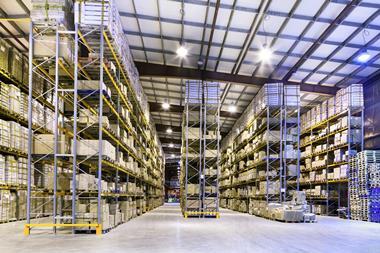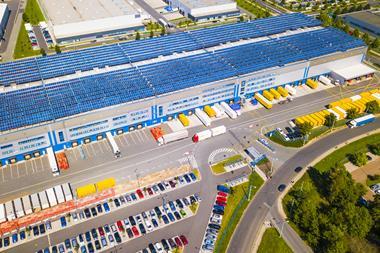The latest version of the London Plan included some subtle but significant changes to industrial land policies, particularly Policy E7, which protected strategic industrial land (SIL) from exploitation by housebuilders.

Historically, the loss of SIL and locally significant industrial sites was encouraged by certain London boroughs, but an increasing awareness that employment land was as important as residential land has shifted opinion. A growing population was placing a greater strain on the remaining industrial land to provide the delivery and distribution centres essential for the functional aspects of the city, exacerbated by the rise of internet shopping and next-day deliveries.
Subsequently, policy shifted towards intensifying uses on the existing employment land, particularly providing multi-level or stacked industrial – and, where possible, co-location of residential with industrial space. Like a lot of policy, though, this is often easier said than done.
Stacked industrial is essential to unlocking the potential of co-location as it allows maximised use of limited land space by building upwards, permitting the creation of significant industrial capacity integrated within residential neighbourhoods, easing distribution and shortening delivery lines.
[Stacked industrial is] the rental growth story one has to buy into, and all indicators in London are that this is a particularly strong story.
The concept has already been in use in other parts of the world such as the US, Japan and Canada, but is still relatively new to the UK. When combined with the idea of ‘15-minute neighbourhoods’, it can bring together all aspects of living, working, shopping, education and leisure in centralised locales, maximising space efficiency while transforming public spaces.
When looking at viability, the first consideration is: are the proposed industrial uses compatible with residential use? For example, creatives, makers, maybe trade counters, but not the dirty, smelly and noisy uses for which SIL designation was rightly intended.
The second question is: can the co-location be done safely with the employment uses? Agent-of-change issues need to be carefully thought through.
Finally, any project must be financially viable. Stacked industrial is much more expensive to build, and to an extent co-location has its own challenges, so carries an insurance – and potentially a mortgage – premium.
However, while lifts and ramps, load-bearing construction and generous yard spaces all come at a premium, much of the existing tin-shed stock will never meet the EPC standard.
With vacancy rates at a historic low, and industrial rents set to rise by over one-third in the next five years, it is no surprise that many industrial providers are developing stacked units. In the current higher-interest environment, it’s the rental growth story one has to buy into, and all indicators in London are that this is a particularly strong story.
Youssef Kadiri is managing director of NEAT Developments





























No comments yet